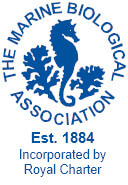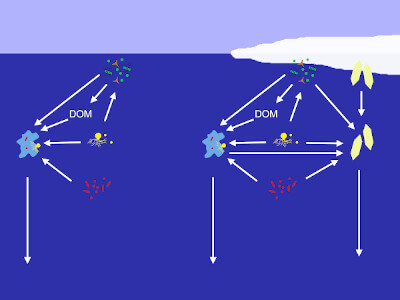ProMis, Western High Arctic Ocean between Svalbard and Ellesmere Island
Production and export of phytoplankton-derived organic matter in the changing Arctic Ocean – Role of parasites, saprotrophs and mineral (ProMis)
Principal investigator: Dr. Birthe Zaencker, The Marine Biological Association of the UK

Project Partners: Dr. Michael Cunliffe, The Marine Biological Association of the UK; Dr. Brandon Hassett, The Arctic University of Norway; Dr. Jutta Wollenburg, Alfred-Wegener Institute, Germany
Research Icebreaker: IB Oden
Schedule: August to September 2020
Abstract: Arctic sea ice extent is decreasing rapidly. By the middle of this century, the Arctic will be mostly, if not completely, ice-free during the summer. Whether this will stimulate phytoplankton due to increased light exposure or inhibit phytoplankton growth due to increased water column stratification and photoinhibition is currently not understood. Phytoplankton are not only influenced by abiotic factors, but also by microbial interactions. For example, fungal parasites can attack diatoms and influence their production of organic matter (OM).
Part of the OM produced by phytoplankton can aggregate to form Transparent Exopolymer Particles (TEP), which are gel-like rich-carbohydrate particles. Due to their stickiness, TEP can aid in the formation of larger aggregates (e.g. marine snow) and thus can increase carbon export. Likewise, cryogenic gypsum can aggregate with phytoplankton and can increase the export of OM.
Our project aims to highlight the changes in microbe-particle interactions and microbe-microbe interactions and their impact on the biological carbon pump with regard to varying sea ice conditions. The abundance of particles such as gypsum and TEP will be analysed. In addition, identification of the associated microbial communities of both particle types will advance understanding of TEP degradation and the role of gypsum in export of particledegrading microbes. We will also be examining how fungal parasites influence major diatom producers of TEP precursors, and their OM production rates. Using DNA/RNA analysis in combination with microscopy, Raman spectroscopy and phospholipid fatty acid analysis will enable this project to gain a comprehensive overview of the role of parasites, saprotrophs and mineral ballasting in the export of phytoplankton-derived OM in the changing Arctic Ocean.


